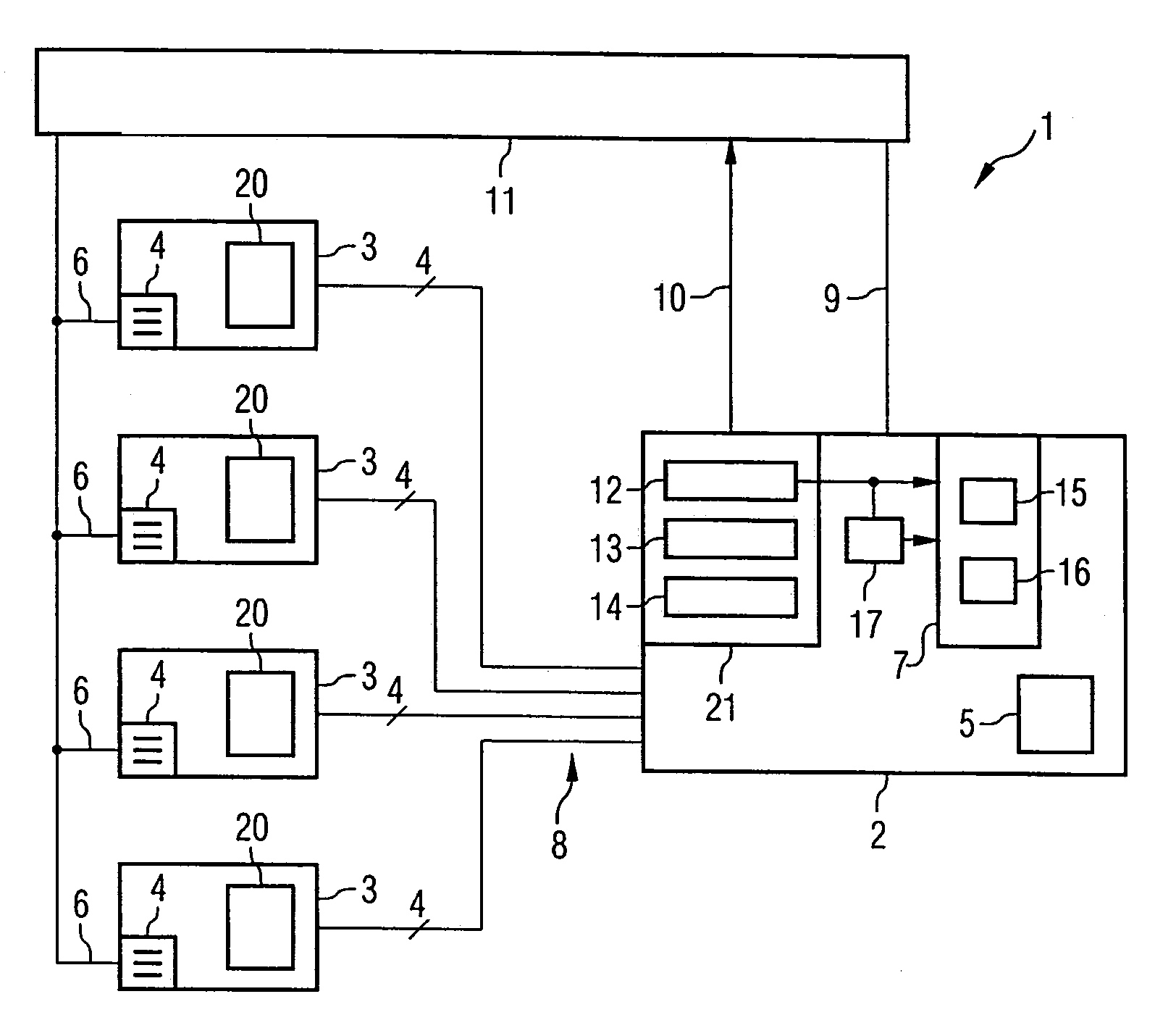Memory module, test system and method for testing one or a plurality of memory modules
a memory module and test system technology, applied in the field can solve the problems of restricting the throughput of integrated memory modules, restricting the time taken to transfer defect data, and restricting the throughput of testing integrated memory modules on a tester device, so as to achieve the effect of increasing throughput and reducing the time for testing memory modules
- Summary
- Abstract
- Description
- Claims
- Application Information
AI Technical Summary
Benefits of technology
Problems solved by technology
Method used
Image
Examples
Embodiment Construction
[0028]The single FIGURE shows a test system 1 according to the invention having an integrated first memory module 2 according to the invention and second memory modules 3 connected thereto. The second memory modules 3 may be both conventional memory modules to be tested and memory modules to be tested which are structurally identical to the first memory module 2. What is essential for the second memory modules 3 is that they each have a second self-test unit 4. The first memory module 2 has a first memory unit 5 and the second memory modules 3 have second memory units 20.
[0029]The self-test unit 4 serves to start a self-test in accordance with a corresponding test start command, the memory cells (not shown) of a memory unit 20 in the respective second memory module 3 in each case being tested during the self-test. Defect data which specify whether a memory cell is defective or functions without any defects are generated during the self-test.
[0030]The test start command is received b...
PUM
 Login to View More
Login to View More Abstract
Description
Claims
Application Information
 Login to View More
Login to View More - R&D
- Intellectual Property
- Life Sciences
- Materials
- Tech Scout
- Unparalleled Data Quality
- Higher Quality Content
- 60% Fewer Hallucinations
Browse by: Latest US Patents, China's latest patents, Technical Efficacy Thesaurus, Application Domain, Technology Topic, Popular Technical Reports.
© 2025 PatSnap. All rights reserved.Legal|Privacy policy|Modern Slavery Act Transparency Statement|Sitemap|About US| Contact US: help@patsnap.com


